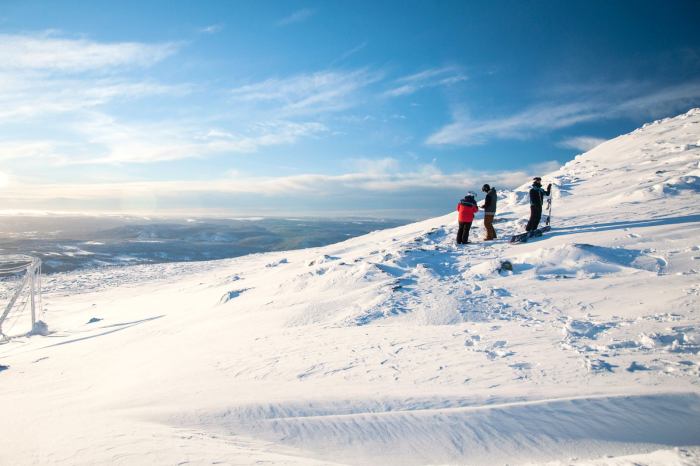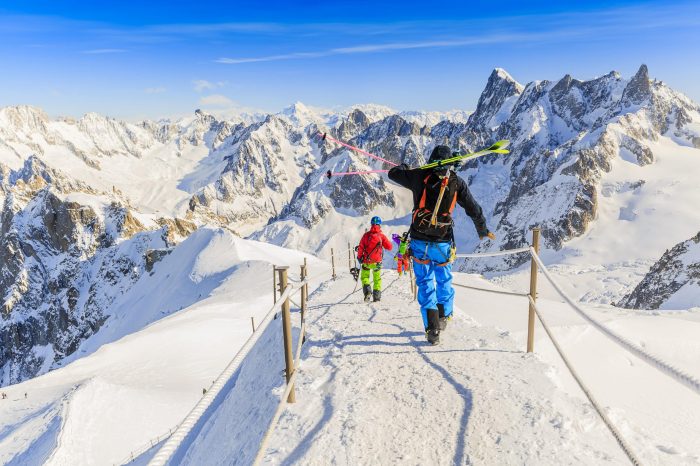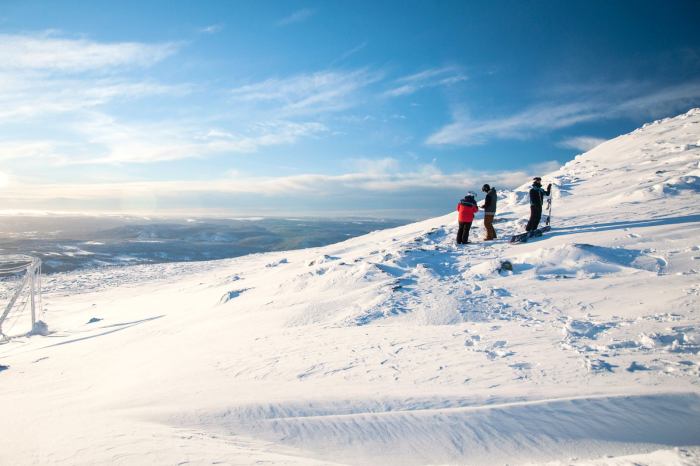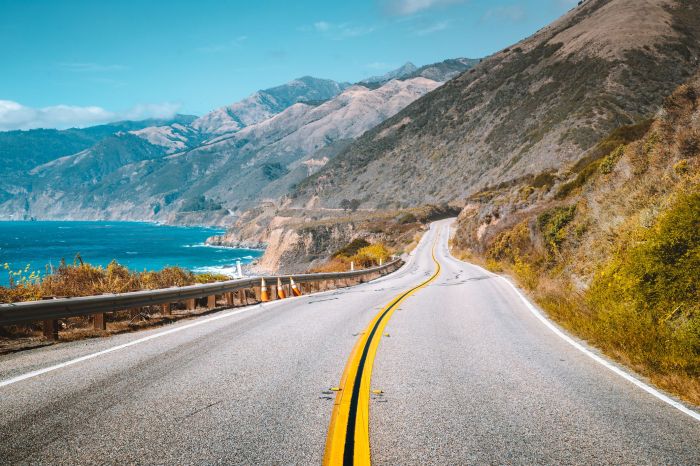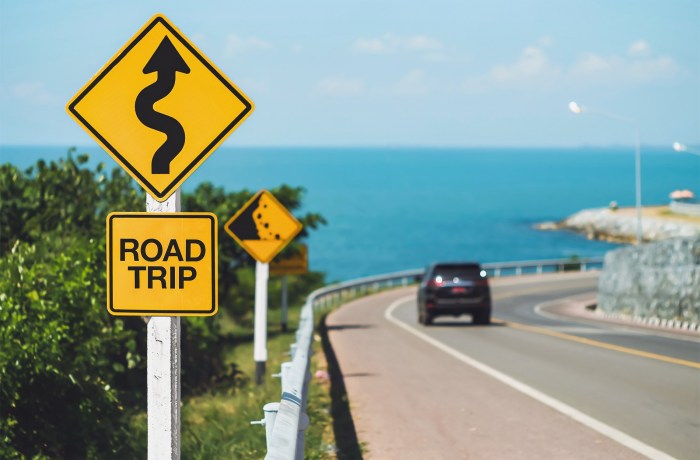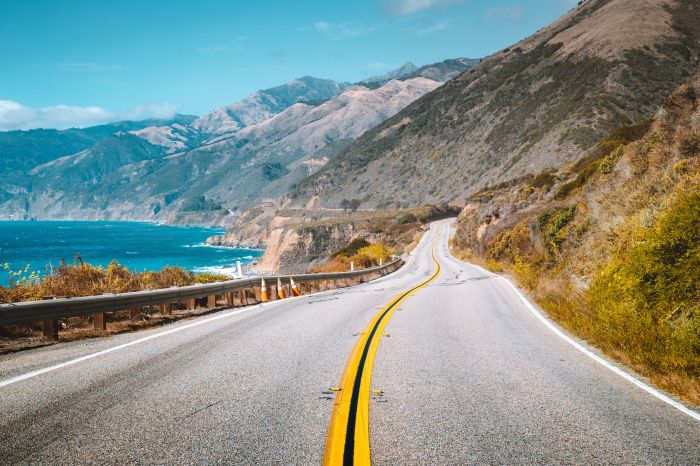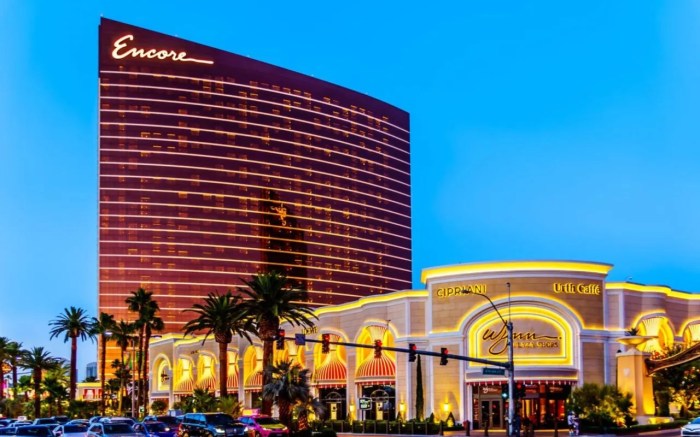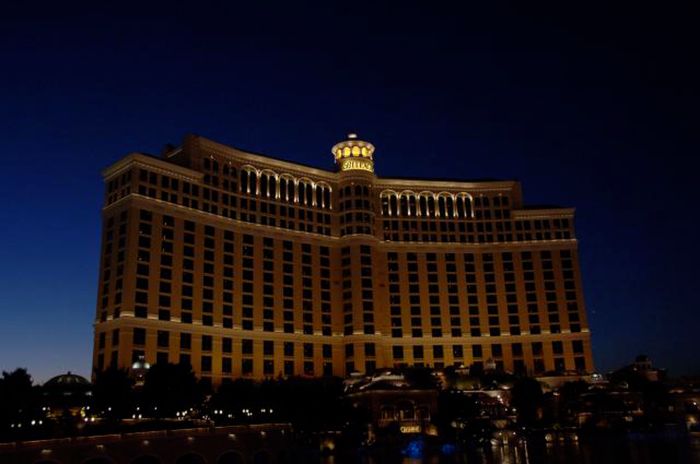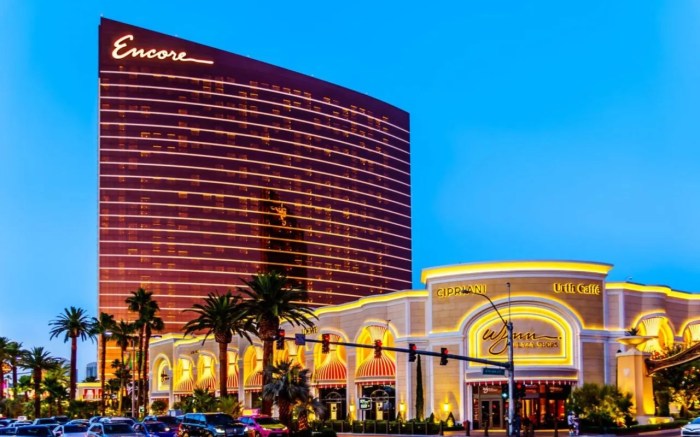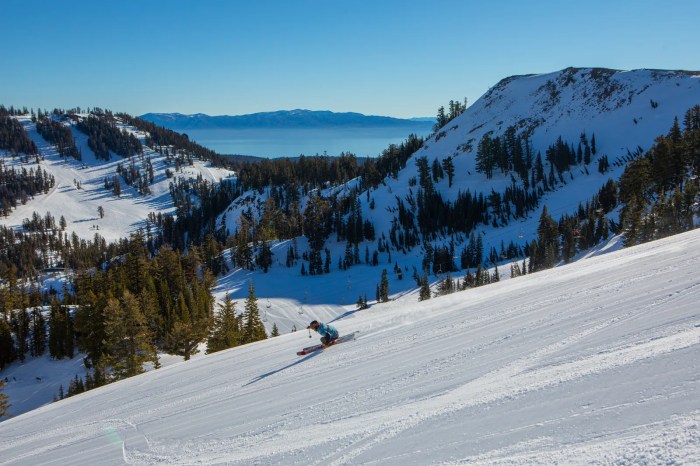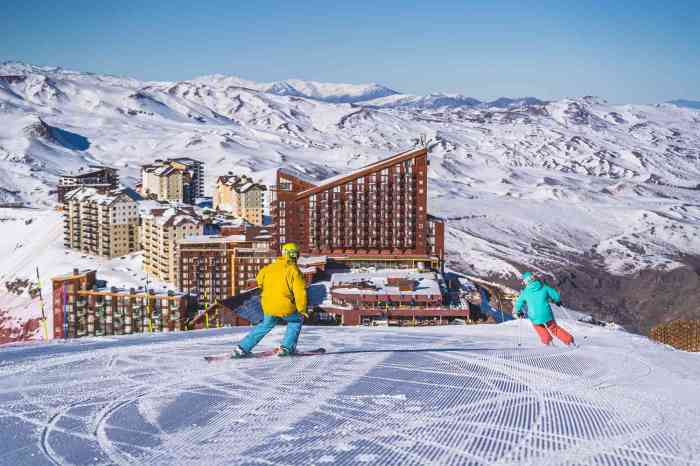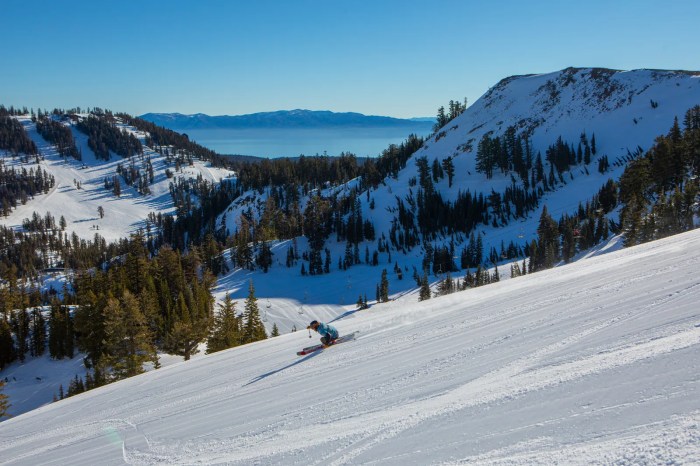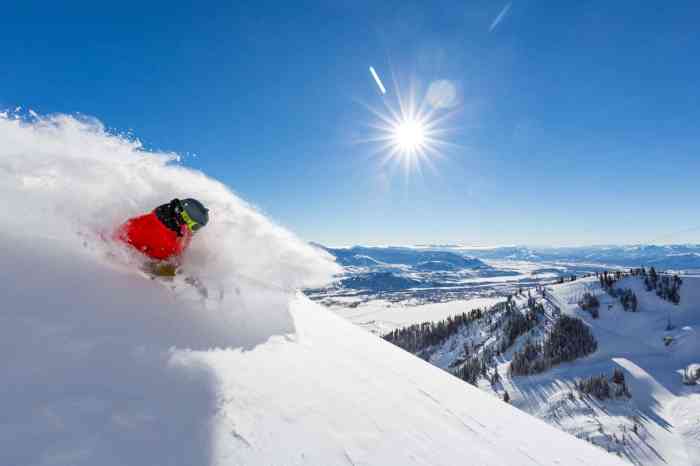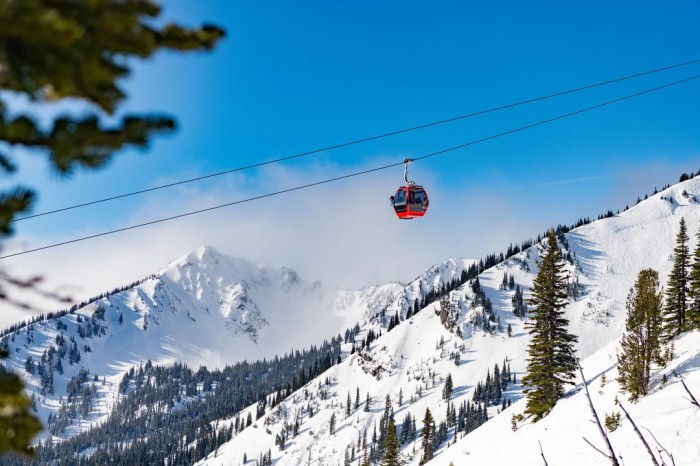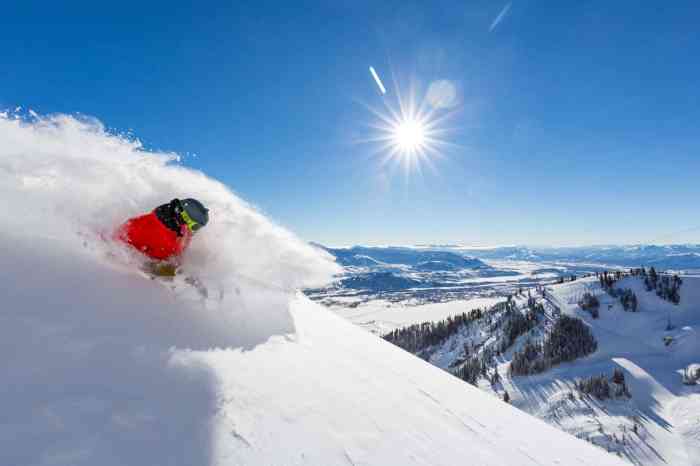The best ski experiences in South America offer a unique blend of breathtaking scenery and challenging slopes. From the towering Andes to hidden valleys, this continent boasts a diverse range of skiing experiences, catering to all levels of skill and adventure.
This guide dives deep into the heart of South American skiing, exploring top destinations, thrilling activities beyond the slopes, essential trip planning considerations, and crucial safety tips. We’ll highlight the diverse terrains, compare popular resorts, and uncover the cultural richness that elevates the overall experience. Get ready to embark on a ski adventure unlike any other!
Introduction to South American Skiing
South American skiing offers a unique and exhilarating experience, contrasting dramatically with the more established scenes of Europe or North America. The high Andes mountains, with their diverse landscapes and challenging terrain, provide a captivating adventure for skiers of all levels. From the picturesque slopes of Chile to the rugged peaks of Argentina, the region’s varied scenery and accessibility make it a compelling destination for winter sports enthusiasts.The Andes mountain range, stretching through several South American countries, provides a stunning backdrop for world-class skiing.
This diverse terrain caters to skiers with varying experience levels, offering challenging descents alongside gentler slopes suitable for beginners. The unique charm of South American skiing lies in its connection to the rugged beauty of the Andes and the vibrant cultures of the surrounding regions.
Diverse Terrains and Slopes
South America’s skiing terrain boasts a remarkable diversity. From the challenging, glacially carved slopes of the Chilean Andes to the wide-open bowls and groomed runs of Argentina’s resorts, skiers encounter a range of experiences. The varying altitudes and aspects of the mountains lead to distinct snow conditions, further enriching the skiing experience. The presence of glaciers plays a significant role in shaping the terrain and influencing snow quality, which can vary from powdery to hard-packed depending on the specific location and time of year.
Varying Experience Levels
The South American ski scene caters to skiers of all abilities. Beginner-friendly slopes are often found at lower elevations, offering gentle runs for those new to the sport. Intermediate skiers can find challenging yet manageable terrain, providing opportunities for improvement. Expert skiers will appreciate the steep, challenging runs and off-piste adventures, demanding a high level of skill and experience.
South America’s ski resorts offer breathtaking views and challenging slopes. Planning a trip to experience the best of these destinations requires careful consideration, especially when travelling with young children. Booking with Japan Airlines for a smooth flight experience, especially if you have a baby, can make all the difference. Japan Airlines babies flight services often provide amenities and support for families, ensuring a relaxed journey.
Ultimately, the best ski experiences in South America will be unforgettable, regardless of your travel preparations.
Resorts are often well-equipped with ski schools and instructors to assist skiers of all levels.
History of Skiing in South America
Skiing’s presence in South America has steadily grown over the decades, influenced by the growing popularity of winter sports globally. The early development of skiing in the region was driven by the increasing interest in outdoor activities and the recognition of the potential of the Andes mountains. Over time, ski resorts have emerged, offering world-class facilities and services to cater to the demands of tourists and local enthusiasts.
The history of skiing in South America is intertwined with the region’s overall development and its growing role in international tourism.
Key Ski Resorts Comparison
| Country | Resort | Location | Elevation (m) | Terrain |
|---|---|---|---|---|
| Chile | Valle Nevado | Santiago Metropolitan Region | 2,800 | Wide range, from beginner to expert |
| Chile | Portillo | Andes Mountains | 2,900 | Challenging, excellent off-piste |
| Argentina | Bariloche | Patagonia | 700-1,000 | Variety, from beginner to advanced |
| Argentina | Chapelco | Patagonia | 1,500 | Challenging, diverse terrain |
This table provides a basic overview of some prominent ski resorts in the region. Factors like location, elevation, and terrain characteristics are crucial considerations when choosing a ski destination. Further research into specific resorts is recommended to determine suitability for individual needs.
Top Ski Destinations in South America
South America offers a diverse range of breathtaking ski experiences, from the towering Andes peaks to the charming villages nestled amidst the snow-capped mountains. These destinations cater to a wide range of skiers, from families seeking gentle slopes to seasoned professionals craving challenging terrain. This exploration will delve into the top ski resorts, highlighting their unique attractions, amenities, and pricing.The choice of South American ski resorts depends on the type of experience desired.
Some resorts are renowned for their family-friendly atmosphere, offering gentler slopes and activities for all ages. Others cater to expert skiers with challenging black diamond runs and exhilarating off-piste adventures. Understanding the specific characteristics of each resort is crucial for selecting the perfect destination for your ski trip.
South American skiing is seriously epic, offering incredible powder and challenging slopes. While exploring those stunning peaks, you might be tempted to swap the crisp mountain air for the turquoise waters of Bora Bora, specifically checking out the best beaches in bora bora. But trust me, nothing beats the adrenaline rush and breathtaking views of the Andes.
Seriously, the best ski experiences in South America are truly unforgettable.
Popular Ski Resorts
South American ski resorts are renowned for their stunning scenery and challenging terrain. These destinations offer a unique blend of adventure and relaxation, drawing skiers from around the globe. Choosing the right resort depends on your skill level, budget, and desired level of activity.
- Cerro Catedral (Argentina): This is a highly-rated resort known for its extensive terrain, with options for all skill levels. Its excellent infrastructure, including well-maintained slopes and modern amenities, attracts a large number of visitors. It’s also a favorite for its lively après-ski scene and diverse dining options. Average week-long trip cost: $1500 – $2500.
- La Parva (Chile): Nestled in the Andes Mountains, La Parva boasts breathtaking views and challenging slopes that are popular with expert skiers. The resort also offers a variety of activities, including snowboarding and cross-country skiing. Average week-long trip cost: $1200 – $2000.
- Valle Nevado (Chile): This is another top-tier Chilean resort, known for its challenging runs and exceptional service. It’s a great choice for skiers who prefer a more luxurious and refined experience. Average week-long trip cost: $1800 – $2800.
- El Colorado (Argentina): This resort is a favorite among families and groups. It’s well-known for its wide range of slopes, including beginner-friendly terrain. The charming village atmosphere and proximity to other activities create a welcoming experience. Average week-long trip cost: $1000 – $1800.
- Pucón (Chile): This region, not a single resort but a cluster of smaller resorts, is popular for its stunning natural beauty. The area offers a range of ski experiences, from beginner slopes to challenging runs. It’s also known for its hot springs and proximity to hiking trails. Average week-long trip cost: $1000 – $1500.
Terrain and Amenities Comparison
Different ski resorts cater to diverse preferences and experience levels. Comparing the terrain and amenities offered is crucial in choosing the ideal ski destination.
| Ski Area | Terrain Description | Amenities |
|---|---|---|
| Cerro Catedral | Extensive network of slopes, ranging from beginner-friendly runs to challenging black diamond runs. A variety of off-piste options are also available. | Modern lifts, well-maintained slopes, numerous restaurants and bars, ski schools, and rental shops. |
| La Parva | Focused on challenging terrain, with long, steep slopes ideal for expert skiers. Limited beginner-friendly options. | High-quality ski lifts, ski schools, rental shops, and a selection of restaurants and bars. |
| Valle Nevado | Wide range of challenging slopes and excellent off-piste opportunities. Known for its high-altitude location, which provides exceptional snow conditions. | First-class ski lifts, well-maintained slopes, high-end accommodations, and luxury amenities. |
| El Colorado | Variety of slopes, with a strong focus on family-friendly areas. Good options for intermediate skiers as well. | Modern lifts, family-friendly facilities, good ski schools, rental shops, and restaurants. |
| Pucón | Multiple smaller resorts within the region, offering diverse terrain, from beginner-friendly slopes to more challenging options. | Variety of ski lifts and amenities depending on the specific resort within the region. |
Experiences Beyond the Slopes
South American ski destinations offer more than just breathtaking runs. Immerse yourself in the vibrant cultures, delicious cuisines, and captivating local activities that enhance the overall ski experience. From the Andes’ towering peaks to the charming mountain towns, the region provides a rich tapestry of experiences that extend far beyond the slopes.
Cultural Immersion
South American ski resorts are nestled within communities deeply rooted in their traditions. Visiting local markets, attending cultural performances, or simply interacting with locals reveals the rich tapestry of Andean culture. Learning basic Spanish phrases and showing respect for local customs can foster meaningful interactions and deepen the appreciation of the region’s history and heritage. This connection with the local culture is an integral part of the South American ski experience, transforming it from a mere vacation to a journey of discovery.
Local Activities and Attractions
Each ski destination boasts a variety of attractions outside the slopes. Exploring charming villages, visiting local museums, or taking a hike in the surrounding landscapes can provide a glimpse into the region’s unique character. Consider a visit to the local artisan workshops to witness traditional crafts or a day trip to a nearby national park to appreciate the stunning natural beauty.
These excursions enrich the overall ski experience and allow for a deeper understanding of the local culture.
- Hiking and Nature Walks: Many destinations offer scenic hiking trails and nature walks, providing opportunities to appreciate the breathtaking Andean scenery. These trails often lead to hidden waterfalls, alpine lakes, and panoramic viewpoints, enhancing the visual feast of the ski experience.
- Visiting Local Markets: Exploring local markets is an excellent way to experience the vibrant atmosphere of Andean communities. These markets offer a glimpse into local life, from fresh produce and handcrafted goods to unique souvenirs.
- Cultural Performances: Check local listings for traditional music performances, dances, or other cultural events that might be taking place during your ski trip. These experiences offer an authentic encounter with the region’s traditions.
Local Cuisine and Dining Options
South American cuisine, particularly in the Andean region, offers a delightful array of flavors and culinary experiences. From hearty stews to flavorful empanadas, the local dishes reflect the region’s unique history and agricultural heritage. Restaurants in ski towns often feature both international and traditional dishes, catering to diverse palates. Indulge in the regional specialties and savor the unique culinary landscape of South America.
Surrounding Environment and its Impact
The stunning Andean landscapes play a pivotal role in the overall ski experience. The towering peaks, glacial rivers, and alpine meadows create a captivating environment that complements the thrill of skiing. The unique biodiversity of the region and its impact on the ecosystem should be appreciated. Consider the environmental consciousness of the resorts and local communities to ensure a responsible and sustainable visit.
Local Culture Enhancing the Experience
The cultural richness of the region significantly enhances the overall ski experience. From the warmth of the locals to the vibrant festivals, the unique traditions of the Andean communities add depth and significance to the journey. The local culture infuses the ski destination with a unique personality and charm, creating an unforgettable experience that goes beyond the thrill of skiing.
Cultural Events and Festivals
| Destination | Month | Event |
|---|---|---|
| Bariloche, Argentina | September | Festival de la Nieve (Snow Festival) |
| Cerro Catedral, Argentina | June | Summer Festival |
| Valle Nevado, Chile | July | International Ski Festival |
| Chacaltaya, Bolivia | June | Andean Culture Festival |
Essential Considerations for Planning a Trip
Planning a ski trip to South America requires careful consideration of factors beyond simply choosing a destination. Understanding the ideal time to visit, necessary travel arrangements, appropriate gear, and associated costs are crucial for a smooth and enjoyable experience. This section dives into these vital elements, ensuring your trip is well-planned and fulfilling.
Best Time of Year to Visit
South American ski destinations experience varying peak seasons depending on altitude and location. Knowing when to visit maximizes snowfall and minimizes crowds. For example, the Chilean Andes typically offer excellent skiing from June to September, while Argentinian resorts often see peak conditions from July to October. Accurately researching the specific resort’s ideal time frame is key to optimizing your trip.
Travel and Accommodation Options
Travel to South American ski resorts often involves flights to major cities like Santiago, Buenos Aires, or La Paz, followed by transfers to the mountain destinations. Transportation options range from buses to private shuttles. Accommodation options vary from budget-friendly hostels to luxurious hotels, depending on your preference and budget. Consider booking accommodations in advance, especially during peak season.
This ensures you have a place to rest and recover after a day on the slopes.
South American skiing is seriously incredible. The stunning scenery is unmatched, and the slopes are just begging to be conquered. While I’m planning my next trip, I’ve been checking out Debbie Allen’s Instagram dance class, debbie allen instagram dance class , which is seriously inspiring! It’s definitely going to be a blast learning to dance while I recover from my incredible ski adventure in Patagonia!
Gear and Equipment
The necessary gear depends on the specific ski experience you desire. For beginner skiers, a basic set of skis, boots, and poles will suffice. Experienced skiers may need specialized equipment, such as advanced skis, bindings, and goggles. Remember to bring layers of clothing, including waterproof and windproof outerwear. Appropriate footwear for exploring beyond the slopes is also essential, especially if you plan on hiking or engaging in other activities.
Consider renting equipment if you only plan on a short trip.
Costs Associated with Flights, Accommodation, and Lift Tickets
Flights to South American ski destinations can vary significantly depending on the origin point and booking time. Accommodation costs also fluctuate based on the resort, hotel category, and season. Lift tickets are typically priced per day or for a multi-day pass. Prices are also affected by the resort and the level of service offered. Expect to allocate a significant budget for flights and accommodation, especially during peak season.
Prices for lift tickets can vary depending on the popularity of the resort and the length of the pass.
Estimated Budget for a Week-Long Ski Trip to Bariloche, Argentina
A week-long ski trip to Bariloche, Argentina, for a mid-range experience, with a moderate level of comfort, can be estimated at $2,000 – $3,500 per person. This includes round-trip flights, accommodation in a mid-range hotel, lift tickets for a week, and basic food expenses. Factors like the chosen hotel, lift pass type, and additional activities will influence the final cost.
This is a rough estimate; actual costs may vary depending on the specific choices.
Visa Requirements and Currency Exchange Rates
| Country | Visa Requirements | Currency | Exchange Rate (USD) |
|---|---|---|---|
| Argentina | Visa may be required depending on nationality. Check specific requirements. | Argentine Peso (ARS) | Current exchange rate (e.g., 1 USD = 380 ARS) |
| Chile | Visa may be required depending on nationality. Check specific requirements. | Chilean Peso (CLP) | Current exchange rate (e.g., 1 USD = 800 CLP) |
| Bolivia | Visa may be required depending on nationality. Check specific requirements. | Bolivian Boliviano (BOB) | Current exchange rate (e.g., 1 USD = 7 BOB) |
Visa requirements and currency exchange rates are subject to change. Always consult the most up-to-date information from the respective embassies and financial institutions. It’s essential to verify visa requirements well in advance of your trip. Exchange rates can fluctuate, so it’s crucial to understand the current exchange rate at the time of booking.
Illustrative Examples of Ski Adventures
South American skiing offers more than just groomed runs. The diverse landscapes provide opportunities for unforgettable off-piste adventures and thrilling heli-skiing experiences. From the dramatic Andes peaks to hidden valleys, these excursions reveal the raw beauty of the region and provide an unparalleled connection with nature. These experiences are not for the faint of heart, requiring a certain level of physical and mental preparedness.Beyond the well-maintained slopes, a world of untouched powder awaits, demanding a deeper commitment to adventure.
Heli-skiing, in particular, allows access to remote areas that are otherwise inaccessible, offering unparalleled views and exhilarating descents. These unique opportunities showcase the region’s exceptional natural beauty and challenge seasoned skiers to push their limits.
Off-Piste Skiing Adventures in Patagonia
Patagonia, a land of towering granite peaks and glaciers, offers some of the most spectacular off-piste skiing in the world. These excursions involve navigating through challenging terrain, often requiring specialized equipment and local guides. Expect breathtaking vistas of the surrounding Andes, with views of glaciers and ice fields. The wildlife encounters can be truly memorable. Guanacos, condors, and even pumas might be spotted, providing a glimpse into the region’s rich biodiversity.
The level of experience required for these adventures varies depending on the specific terrain. For beginner to intermediate skiers, guided tours are highly recommended. Experienced skiers might opt for more independent exploration.
Heli-Skiing in the Andes
Heli-skiing in the Andes provides unparalleled access to pristine powder snow and remote, untouched landscapes. These flights typically land in previously inaccessible areas, offering incredible views of the Andes’ towering peaks. These expeditions involve specialized helicopters and experienced guides, ensuring safety and efficiency. The scenery is nothing short of breathtaking, with the rugged beauty of the mountains and the sheer expanse of the untouched wilderness.
The varied terrains encountered range from glaciated slopes to treeless ridges, demanding different levels of skill and experience. Expect encounters with local wildlife and an unparalleled connection with nature. The level of experience required is generally high, with advanced skiing abilities and a strong understanding of avalanche safety being crucial.
Comparing Ski Adventure Activities
| Activity | Scenery | Wildlife | Experience Level | Key Considerations |
|---|---|---|---|---|
| Off-Piste Skiing (Patagonia) | Towering granite peaks, glaciers, ice fields | Guanacos, condors, pumas | Beginner to Expert (guided tours available) | Guided tours recommended for beginners; specialized equipment and local knowledge crucial. |
| Heli-Skiing (Andes) | Rugged mountains, untouched wilderness, glaciated slopes | Potential wildlife encounters, depending on location | Expert level (advanced skiing, avalanche safety knowledge) | Specialized helicopters, experienced guides, advanced skiing skills essential. |
Accommodation and Amenities

South American ski resorts offer a diverse range of accommodation options, catering to various budgets and preferences. From cozy mountain lodges to luxurious hotels, travelers can find lodgings that complement their desired level of comfort and experience. Understanding the amenities and features of each type of accommodation is crucial for choosing the perfect place to stay. Beyond the basics, the availability of restaurants, bars, and nightlife plays a significant role in the overall experience.The variety of accommodation options at ski resorts, from budget-friendly hostels to upscale hotels, reflects the range of visitor needs and preferences.
The level of amenities offered, including dining options, recreation facilities, and service quality, is essential in determining the overall value and comfort of a ski vacation. The selection of restaurants, bars, and entertainment venues in resort areas greatly enhances the overall experience, enabling visitors to enjoy the après-ski scene and connect with others.
Accommodation Types
Different types of accommodations offer varying levels of amenities and experiences. Ski-in/ski-out access, for example, provides convenience for skiers, while hotels may offer a broader range of services, such as spas and multiple dining options. Lodges often feature a more intimate and rustic atmosphere, while apartments or condos allow for greater flexibility and self-catering options.
Amenities Provided, The best ski experiences in south america
Accommodation amenities vary significantly, influencing the overall experience. Features like indoor pools, spas, fitness centers, and game rooms are common in upscale hotels. Some lodges may offer traditional fireplaces, outdoor hot tubs, and stunning mountain views. Ski-in/ski-out access is a valuable perk, especially for frequent skiers.
Restaurant, Bar, and Nightlife Options
The availability of dining options, bars, and nightlife is crucial for the après-ski experience. Ski resorts typically offer a range of restaurants, from casual cafes to fine dining establishments. Bars provide a place to relax and socialize, while live music or entertainment venues enhance the evening atmosphere. Nightlife options, from nightclubs to cozy pubs, can vary significantly based on the resort’s size and location.
Comparison Table
| Accommodation Type | Price Range (USD) | Amenities |
|---|---|---|
| Luxury Hotel | $500-$1500+ per night | Ski-in/ski-out access, multiple restaurants, spa, fitness center, indoor pool, 24-hour concierge |
| Boutique Hotel | $250-$750 per night | Ski-in/ski-out access, restaurant, bar, fitness center, sauna |
| Mountain Lodge | $150-$500 per night | Ski-in/ski-out access, restaurant, bar, fireplace, hot tub, panoramic views |
| Condo/Apartment | $100-$400 per night | Kitchen facilities, living area, self-catering options, potentially ski-in/ski-out access |
| Hostel | $30-$80 per night | Shared rooms, common areas, budget-friendly options, some with basic amenities |
Note: Prices are estimates and may vary based on season, demand, and specific resort.
Essential Safety Tips for South American Ski Trips

Embarking on a ski adventure in South America is an exhilarating experience, but it’s crucial to approach it with awareness of the unique challenges and potential hazards. Understanding the terrain, weather patterns, and local customs is paramount for a safe and unforgettable trip. This section Artikels key safety considerations to help you navigate the mountains with confidence.
Specific Safety Concerns in South American Skiing
South American ski resorts, while offering stunning scenery, often present distinct safety concerns compared to resorts in other regions. Altitude sickness, for instance, is a real possibility, especially at higher elevations. The terrain can be challenging, with varying snow conditions and potential for avalanches, particularly in remote areas. Accidents, including falls and injuries, can occur more frequently in unfamiliar environments, and the remoteness of some locations can make emergency response times longer.
Proper preparation and awareness of these potential hazards are essential for a safe trip.
Safe Travel and Accommodation Choices
Selecting reputable tour operators and accommodations is critical. Research thoroughly and choose operators with a proven track record of safety and experience in the region. Verify that the accommodations have the necessary amenities and emergency procedures in place. Look for well-maintained facilities with clear communication protocols. Travel with a group or ensure that someone knows your itinerary and expected return time.
Travel Insurance and Emergency Procedures
Comprehensive travel insurance is an absolute necessity. It should cover medical expenses, evacuation costs, and trip cancellations due to unforeseen circumstances. Familiarize yourself with the emergency procedures and contact information for local authorities and your insurance provider. Have a copy of your insurance policy and relevant contact information readily available. Understand how to use local emergency services, including the appropriate phone numbers.
Potential Weather Conditions and Preparation
South American mountains are known for their unpredictable weather. Sudden changes in temperature, snowfall, and strong winds can pose significant risks. Be prepared for varying conditions throughout the day. Pack appropriate layers of clothing and equipment to adapt to fluctuating temperatures and potential rain or snow. Have a contingency plan in case of adverse weather conditions.
Precautions for Mountain Activities
Mountain activities, including skiing, snowboarding, and snowshoeing, demand respect for the environment and awareness of potential hazards. Always check the avalanche forecasts before heading out. Be aware of the terrain and stick to marked trails. Inform someone of your planned route and estimated return time. Never ski alone in remote areas, and carry essential safety equipment, such as a shovel, probe, and transceiver, and know how to use them.
Summary of Potential Hazards and Safety Precautions
| Potential Hazard | Safety Precautions |
|---|---|
| Altitude Sickness | Acclimatize gradually, stay hydrated, consult a doctor before the trip. |
| Avalanches | Check avalanche forecasts, stay on marked trails, carry essential avalanche safety equipment. |
| Unpredictable Weather | Pack appropriate layers of clothing, monitor weather reports, have a contingency plan. |
| Remote Location | Travel with a group, inform someone of your itinerary, carry emergency contact information. |
| Terrain Challenges | Choose reputable tour operators, be aware of the terrain, stick to marked trails. |
| Accidents | Wear appropriate safety gear, know your limitations, be mindful of the environment. |
Epilogue: The Best Ski Experiences In South America
South America’s ski scene is a treasure trove of unforgettable experiences. From challenging powder runs to culturally immersive excursions, the continent offers something for every skier. Whether you’re seeking a family-friendly vacation or a demanding adventure, this guide provides the essential information to plan your perfect ski trip. Embrace the Andes, discover hidden gems, and create memories that will last a lifetime.

